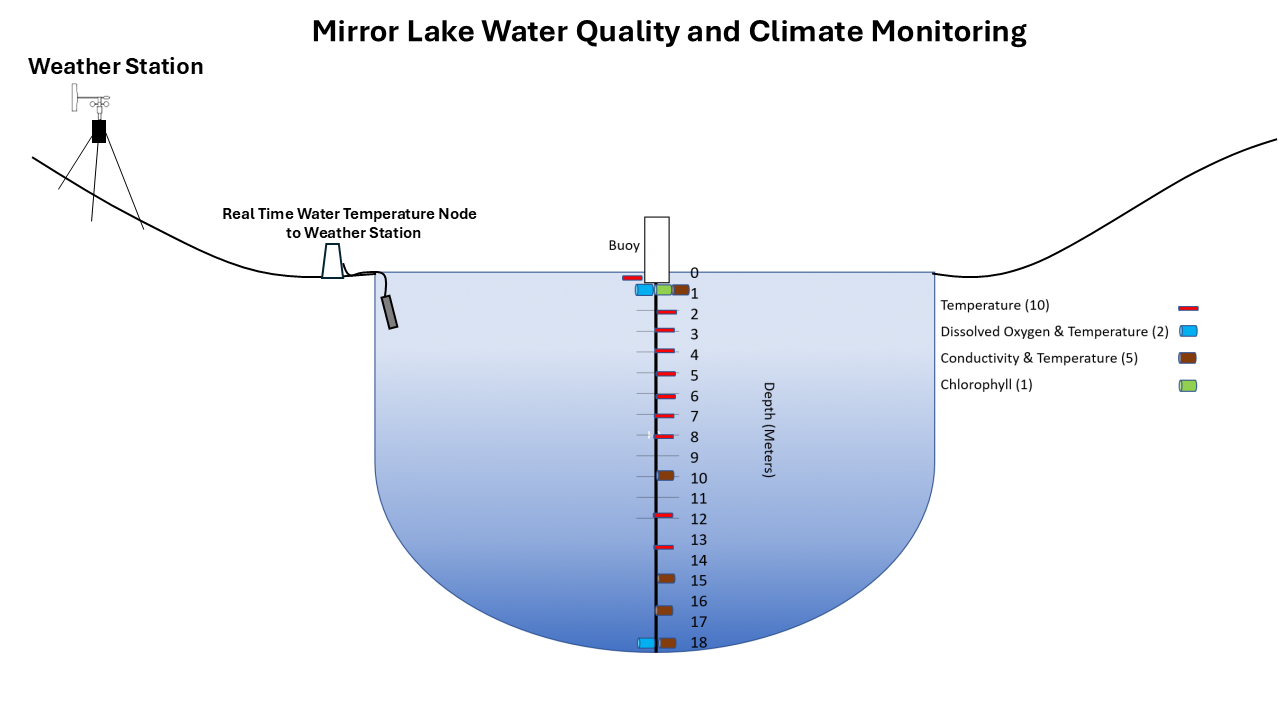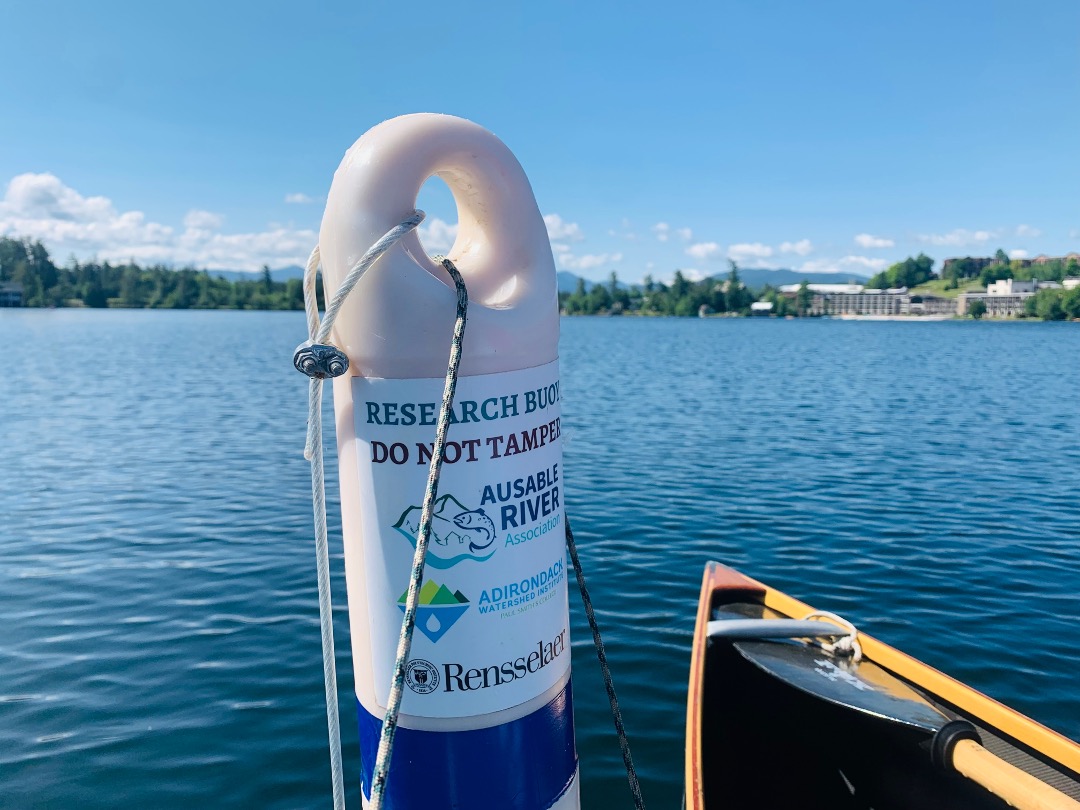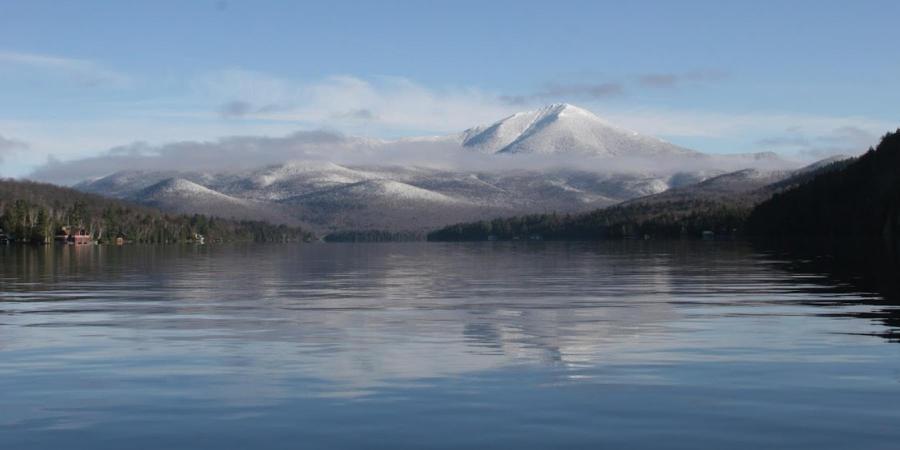In 2020, the Ausable Freshwater Center (AFC) teamed up with Dr. Kevin Rose and his lab group from Rensselaer Polytechnic Institute (RPI) to deploy a high-frequency sensor array in Mirror Lake –starting a partnership between the two organizations. Dr. Rose is an expert in lake ecology and environmental sensor networks. The sensor array is designed to understand patterns in water quality – including conductivity, temperature, dissolved oxygen, and chlorophyll. Years of excess road salt applications have increased the conductivity of Mirror Lake, especially in its deeper waters. Since that time, AFC has worked with Paul Smith's College Adirondack Watershed Institute (AWI) on a rigorous monitoring campaign to track improvements in water quality.
The string of conductivity and temperature sensors connected to the buoy track the density of the water, which controls deep mixing. Additional sensors enable us to track oxygen levels at multiple depths. One of the fears of road salt application is that it prevents seasonal deep mixing in the lake. Most un-impacted lakes in the region mix in both the spring and fall, which brings oxygen from the surface to deep waters. Mirror Lake has stopped mixing in some years, leading to a draw-down of deep-water oxygen. In turn, low oxygen (hypoxic) and no oxygen (anoxic) conditions threaten cold-water fish habitat and can release nutrients from lake sediments, leading to algae growth.

The high-frequency sensors are all internally logging and internally powered, designed with state-of-the-art circuits to minimize power consumption. This new state-of-the-art sensor array streamlines our monitoring efforts enabling us to track water quality year-round, including all winter under ice. AFC is also supporting ongoing bi-weekly sampling with AWI to complement these sensors by providing measurements they can’t.
Support our water quality work for clean water and healthy streams. Give with confidence today!
An added benefit of the sensor design is that it is minimally visible from the surface. Right now, there’s little evidence that this high-tech sensor array is busy at work, collecting measurements every ten minutes, every day of the year.

In addition to the monitoring work going on in Mirror Lake, AFC also added a weather station and a real time surface water temperature node to provide meteorological data to support and validate the aquatic measurements. This monitoring network will also play a vital role in the upcoming Survey of Climate and Adirondack Lake Ecosystems (SCALE). Data from Mirror Lake will be used in the study to see how lakes are changing over time, not only in response to localized threats, but more broadly to a changing climate.
Story by Phil Snyder, Water Quality Research Manager. Top Photo: Larry Master www.masterimages.org
Sign-up for our e-newsletter to get weekly updates on the latest stories from the Ausable Freshwater Center.


